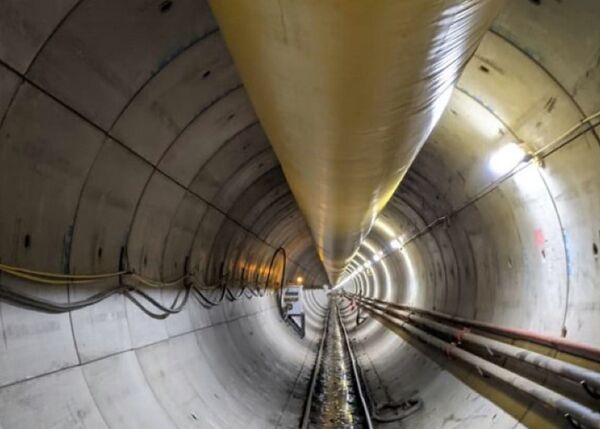
NEC has been selected for delivery of works and services for a £7 billion, 20-year decommissioning programme at Europe’s largest nuclear site. The Programme and Project Partners (PPP), an innovative Project 13 enterprise framework appointed by Sellafield Ltd in May 2019 to support cleaning up the 265 ha Sellafield site in Cumbria, has appointed key delivery partners under NEC4 contracts.
The PPP has awarded works contracts using the NEC4 Engineering and Construction Contract (ECC) Option E (cost reimbursable contract) and let services contracts with the NEC4 Professional Service Contract (PSC) option E. Both standard contracts have been amended to introduce outcome-based incentives that align with the framework’s objectives, resulting in the PPP being voted runner up in the 2022 NEC Contract Innovation of the Year Award.
The former nuclear-power-generating and nuclear-waste-reprocessing site includes a diverse range of more than 200 nuclear facilities and over 1,000 buildings. The framework covers around 25 major decommissioning projects, which together will help to create a clean and safe environment at the Sellafield site for future generations, improve sustainability and better outcomes for the local economy and communities.
The PPP consists of KBR as integration partner, Jacobs as design and engineering partner, Morgan Sindall Infrastructure as civils construction partner and Doosan Babcock as process construction partner. The PPP partners have been engaged by Sellafield Ltd on a management-contracting procurement model under a bespoke form of contract, with works and services being undertaken by the partners’ supply chains under NEC4 contracts.
To transform project delivery at the site and leave a lasting positive legacy for the region, the framework is driven by five critical success factors: cost management, employment, outcome, output and workforce skills.
Creating an incentivised enterprise
The framework adopts the Institution of Civil Engineers’ Project 13 procurement approach, an industry-led response to failing infrastructure delivery models. It moves away from transactional project-driven procurement to an enterprise model, whereby sophisticated long-term relationships are created and success is measured on enterprise outcomes.
PPP’s supply chain commercial lead John Rossiter says the challenge was to develop a suitable model for the appointment of services and works contractors that created an ‘aligned commercially incentivised enterprise’ for achieving the frameworks’ critical success factors. ‘The solution was a “key delivery partners” model, where long-term, strategic, outcome-based relationships were created for works worth up to £3 billion.’
He says the principles of the model are: long-term relationships with supply chain partners based on agreements of up to 18 years; performance defined by outcomes at enterprise level and not purely project performance; commitment to partner, develop, support and utilise small and medium enterprises willing to invest and grow in the region; and achieving early contractor involvement through embellishing framework teams with expertise from contractors and subcontractors.
‘NEC4 was identified as the contract suite of choice for the model given the benefits it brings to project delivery. To achieve the framework’s aims, the main options required amendment to drive profit for performance, embody the government’s The Construction Playbook principles, and attract the best supply chain.’
Rossiter says cost-reimbursable option E for both the ECC and PSC was selected, with key changes to the fee mechanism via a bespoke incentivisation schedule and amendments to option X20 on key performance indicators (KPIs). ‘A new cost component 9 “Corporate Overhead Percentage (COH%)” was added to the schedule of cost components. A pre-defined COH% is added to defined cost, meaning contractors always recover defined cost plus their business overhead. The definition of “Fee” was amended to a tendered “Nominal Profit”, ensuring that some profit is always recovered in addition to defined cost and COH%.’
He says the amended option X20 is now being used to introduce incentivised profit, with a split mandated at framework level so incentivisation is aligned to the framework’s critical success factors. ‘Profit is split 25% for achieving enterprise-level targets such as social impact, environmental and supply chain innovation; 50% for achieving the traditional project measures of time, cost and quality; and 25% for partnering trades, where contractors are partnered and incentivised to deliver common outcomes’.
Rossiter explains that other changes included no delay damages and clarity that the contractor’s sole liability for failing to deliver on time is the loss of associated incentivised profit. ‘There is also no retention and payment terms are 30 days from the payment due date. The prices and programme are built collaboratively by an aligned team and there are no mini-competitions − contractors are allocated works and use forecasts of defined cost and their COH% and profit percentages.
Win-win outcomes
He says as a result, contractors are engaged under innovatively amended ECC and PSC option E contracts whereby they always recover defined cost plus a level of overhead and profit. ‘The 18-year duration allows for investment in West Cumbria and long-term innovation, and the contractors are incentivised to award long-term subcontractor and supplier agreements on the same aligned terms. Early contractor involvement is central and outcomes are aligned so profit for performance is common across the enterprise and win-win outcomes achieved.’
Rossiter concludes that the framework recognised that the collaboration engendered by the NEC requirement to act in a, ‘spirit of mutual trust and co-operation,’ would be key to success. ‘NEC Users’ Group secretary Robert Gerrard’s advice when we consulted him on supply chain models was to “drop the comfort blankets”, and we did.
‘Commercial directors and lawyers from each of the framework partners bought in to approving a model, and executives followed suit. Constructive dialogue dealt with concerns over whether it would work in practice and if incentivised profit would be enough of a carrot to drive performance without any of the traditional sticks of delay damages and pain fear.’
Benefits of using NEC
- Flexibility of the NEC4 contract suite enabled the project team to develop a Project 13 model for the appointment of services and works contractors that created an ‘aligned commercially incentivised enterprise’.
- NEC4 ECC and PSC cost-reimbursable contracts were adapted with bespoke incentivisation schedules and amendments to option X20 on key performance indicators to achieve critical success factors.
- Collaboration engendered by the NEC requirement to act in a, ‘spirit of mutual trust and co-operation,’ was recognised by the project partners as the key to successful delivery.



